Samsung QN85D is the entry-level model in the Neo QLED series for 2024, but it certainly doesn’t come across as a "budget" option. It’s a television that combines modern technology with convenient smart features. During tests, the Tizen system operated smoothly, and integration with the SmartThings ecosystem made it easy to connect other devices in the home. If we use Apple devices, AirPlay works flawlessly, which is convenient, especially for viewing photos or videos from our phone. As for its performance during daily use, it simply works very well. The television handles viewing even in bright rooms – its brightness is sufficient that there’s no need to cover the windows. Additionally, the stable central stand not only looks good but also adds confidence that the device is standing securely and will definitely fit on smaller furniture. There is a lack of recording function, but the solar remote control, which operates decoders (e.g. Canal+) and the PiP function are practical additions that anyone who enjoys spending time watching regular television will appreciate. As for the picture – because that’s the most important thing in a TV – the QN85D makes a great impression. The VA panel provides very good blacks – especially if we watch the television head-on. Thanks to miniLED backlighting, the television better controls the light, resulting in much more detail visible in dark scenes. When it comes to motion fluidity, the television performs excellently thanks to the 120 Hz refresh rate – both games and matches are enjoyable to watch. If we’re gaming, low input lag combined with an excellent motion smoother and game bar will be a significant advantage – gameplay will be a pleasure. Samsung QN85D is a versatile television that will perform well for both everyday television watching and more demanding sessions or gaming on a console. Although it lacks some features, such as recording, its picture quality, motion fluidity, and smart capabilities definitely make up for these shortcomings. If we’re looking for a modern yet affordable Mini LED model, QN85D will be a very good choice.
- Matching (Score)
- Our verdict
- TV appearance
- Where to buy
- Contrast and black detail
- HDR effect quality
- Factory color reproduction
- Color reproduction after calibration
- Smoothness of tonal transitions
- Image scaling and smoothness of tonal transitions
- Blur and motion smoothness
- Console compatibility and gaming features
- Input lag
- Compatibility with PC
- Viewing angles
- TV efficiency during daytime
- Details about the matrix
- TV features
- Apps
- Playing files from USB
- Sound
Samsung Neo QLED QN85D / QNX1D vs Hisense E8Q
Direct compare
Neo QLED / QN85D / QNX1D
E8Q

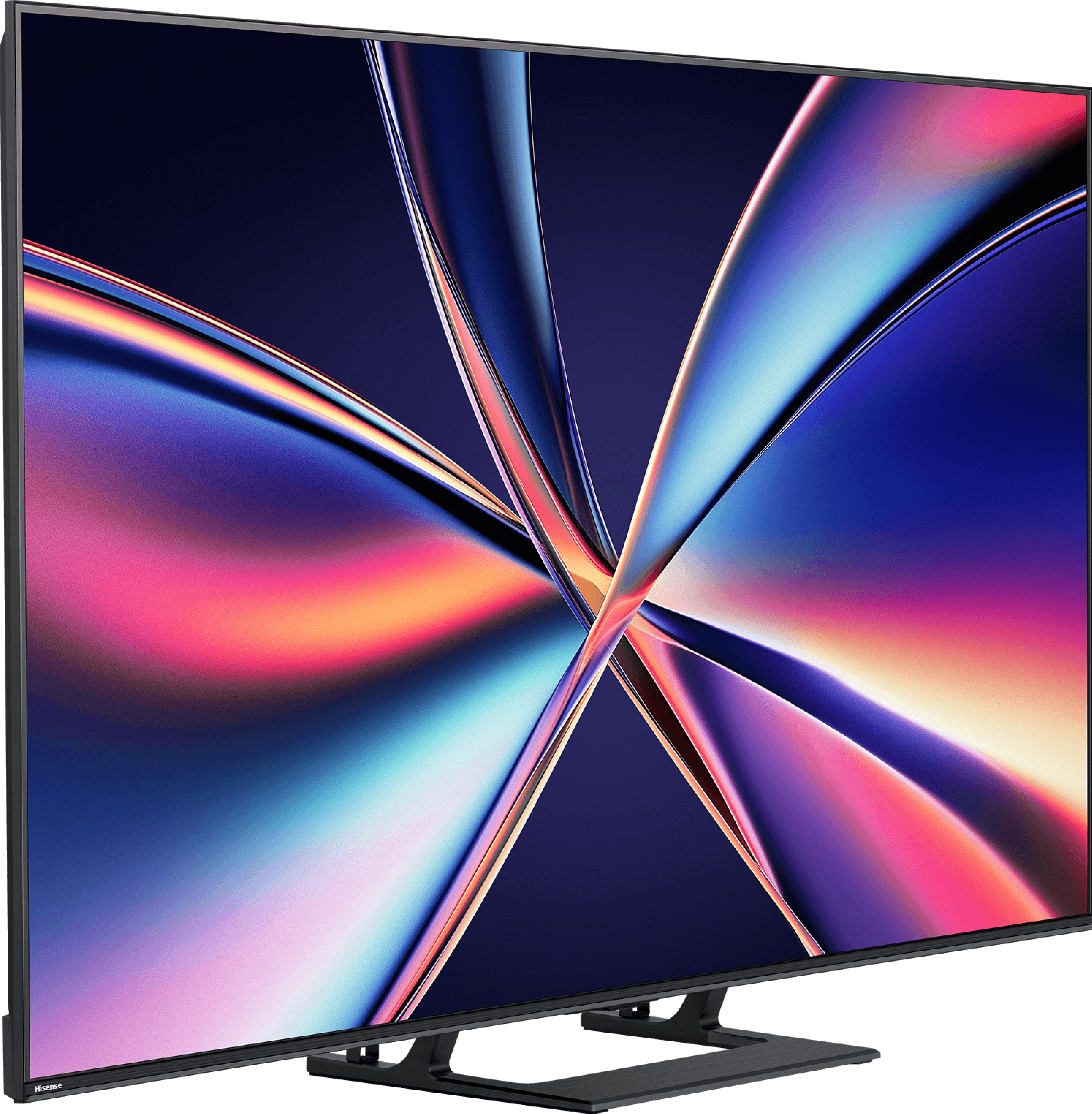
Panel type: LCD VA
Resolution: 3840x2160
System: Tizen
Model year: 2024
Complete the survey to find out the result

Panel type: LCD VA
Resolution: 3840x2160
System: VIDAA
Model year: 2025
Complete the survey to find out the result

Overall rating
7.4
7.0
Movies and series in UHD quality
6.7
6.7
Classic TV, YouTube
6.8
6.8
Sports broadcasts (TV and apps)
6.7
6.5
Gaming on console
8.9
8.0
TV as a computer monitor
7.6
8.6
Watching in bright light
7.3
6.2
Utility functions
7.7
8.9
Apps
8.7
7.7
Sound quality
7.0
5.5
Complete the survey to find out what fits your preferences
Advantages
Nice contrast - Miniled backlighting
Very good for gamers - 120Hz, 4xHDMI 2.1, low input lag
Tizen operating system with SmartThings and AirPlay support – wide integration and flexibility
Very high brightness 825 cd/m² – good performance in bright rooms
Pleasant sound with noticeable bass
Great contrast and deep blacks
Very good smoothness of tonal transitions (close to reference level)
High brightness
Supports 4K 144 Hz and even 240 Hz in Full HD
VRR, ALLM, G-SYNC – a full package for gamers
Low input lag
Many classic TV features built into the VIDAA system
Disadvantages
No recording feature
Limited support for multimedia formats, no DTS audio format
No support for HGiG (makes setting HDR on consoles difficult)
Poor viewing angles – typical for VA panels
Closed VIDAA system – lack of some applications
Inferior sound quality compared to the twin model U7Q
Our verdict
Hisense E8Q is a television that clearly draws heavily from the U7Q model – and that’s a great thing. After all, this is its European version, not another “slimmed down” mutation. After just a few moments with this screen, it’s clear that the E8Q is putting up a fight. And in many areas, it really succeeds. To start with – what impresses is that the blacks are deep, the contrast is high, and the brightness exceeds the threshold that we can simply call satisfactory. Add to that nearly perfect fluidity of tonal transitions, and we have an image that looks very mature, especially for this price segment. In gaming? Just as good. VRR, ALLM support, 144 Hz in 4K, and even 240 Hz in Full HD – it’s hard to find fault here. Well… almost. Because the E8Q has one additional flaw compared to the U7Q – the sound. In our unit, at moderate volume levels, the back of the cabinet began to resonate, producing rather unpleasant crackling noises. This might be a flaw of the test unit, but since the U7Q simply performed better – it’s worth noting. Especially if you find both models at a similar price. We can confidently state that the E8Q is a television that can confidently fight for the attention of those looking for a quality Mini-LED at reasonable prices. If a good price opportunity arises, it’s definitely worth it – because we receive almost the same as in the U7Q. And that means a really solid picture, excellent gaming features, and overall very good equipment that you can stick with for a while.
TV appearance





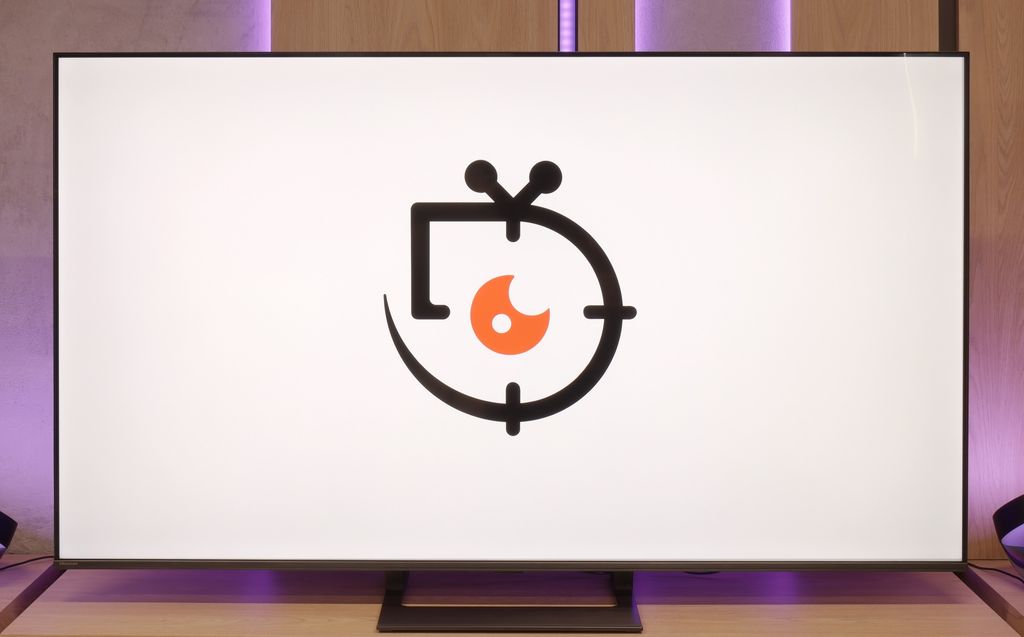
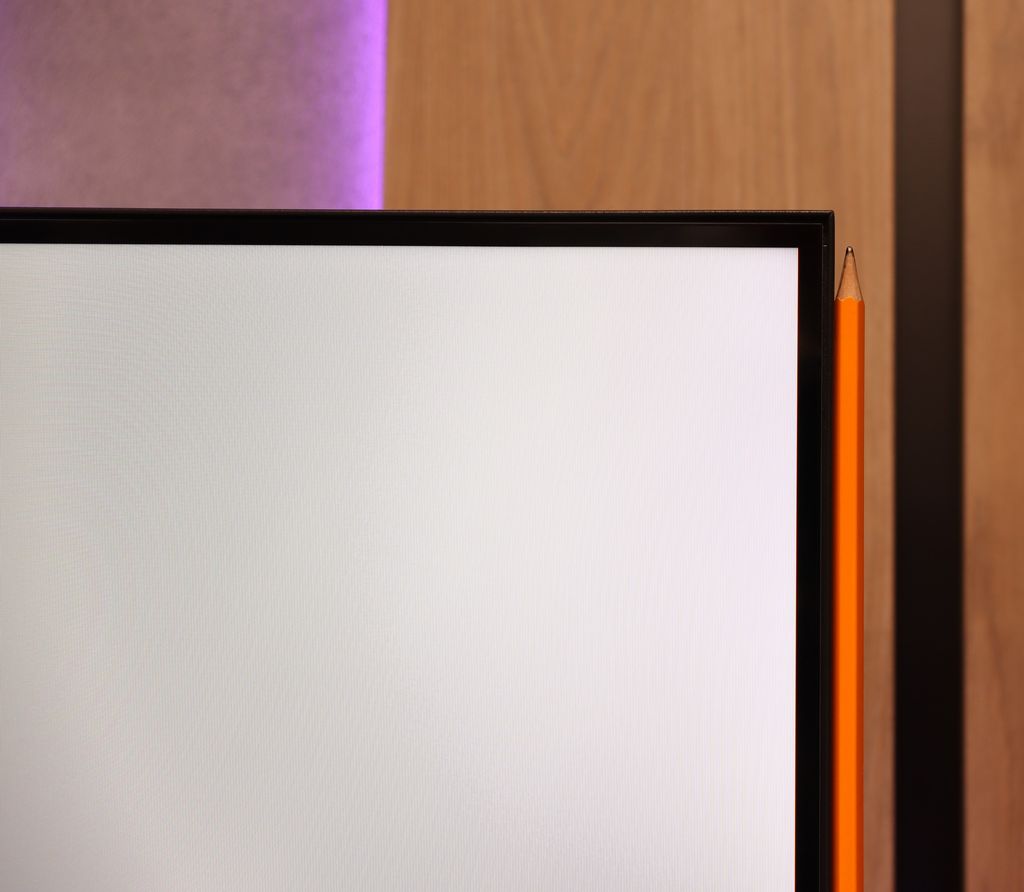
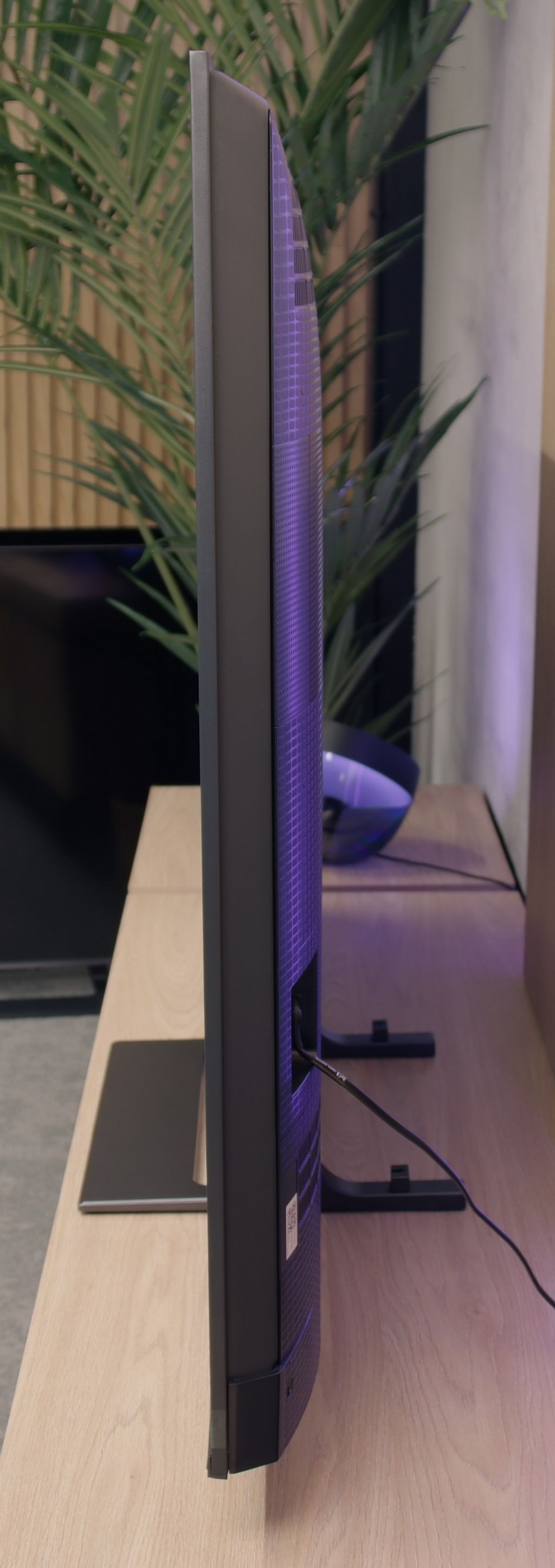
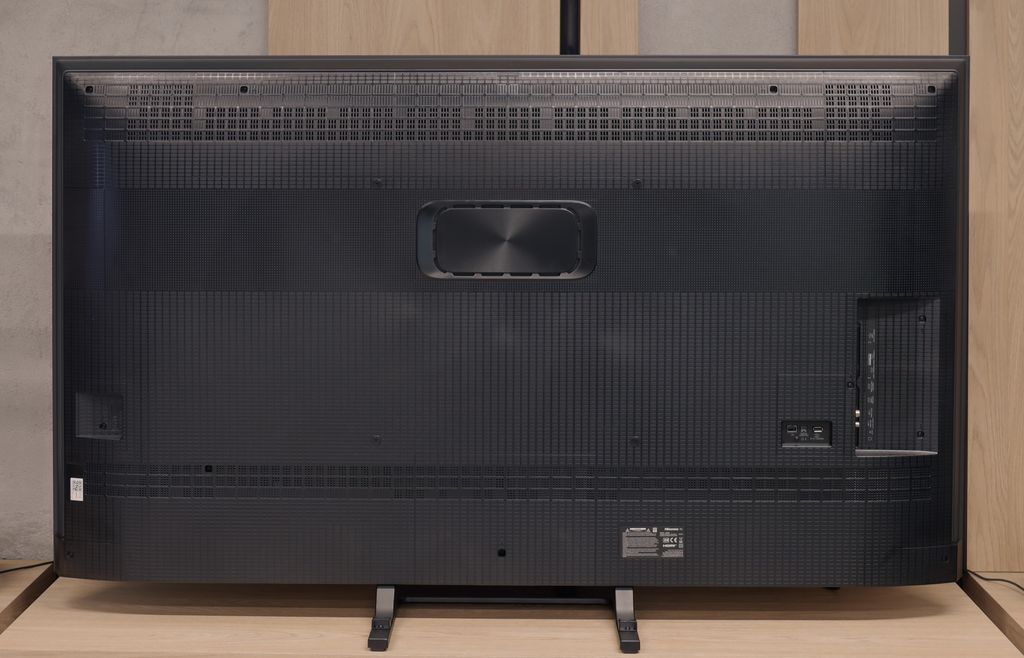
Contrast and black detail
7.6/10
7.6/10
Local dimming function: Yes, number of zones: 120 (12 x 10)
Local dimming function: Yes, number of zones: 220 (10 x 22)
Contrast:

Result
107,750:1

Result
27,100:1

Result
62,500:1

Result
8,750:1

Result
4,950:1

Result
277,000:1

Result
43,700:1

Result
15,750:1

Result
8,850:1

Result
6,350:1
Halo effect and black detail visibility:

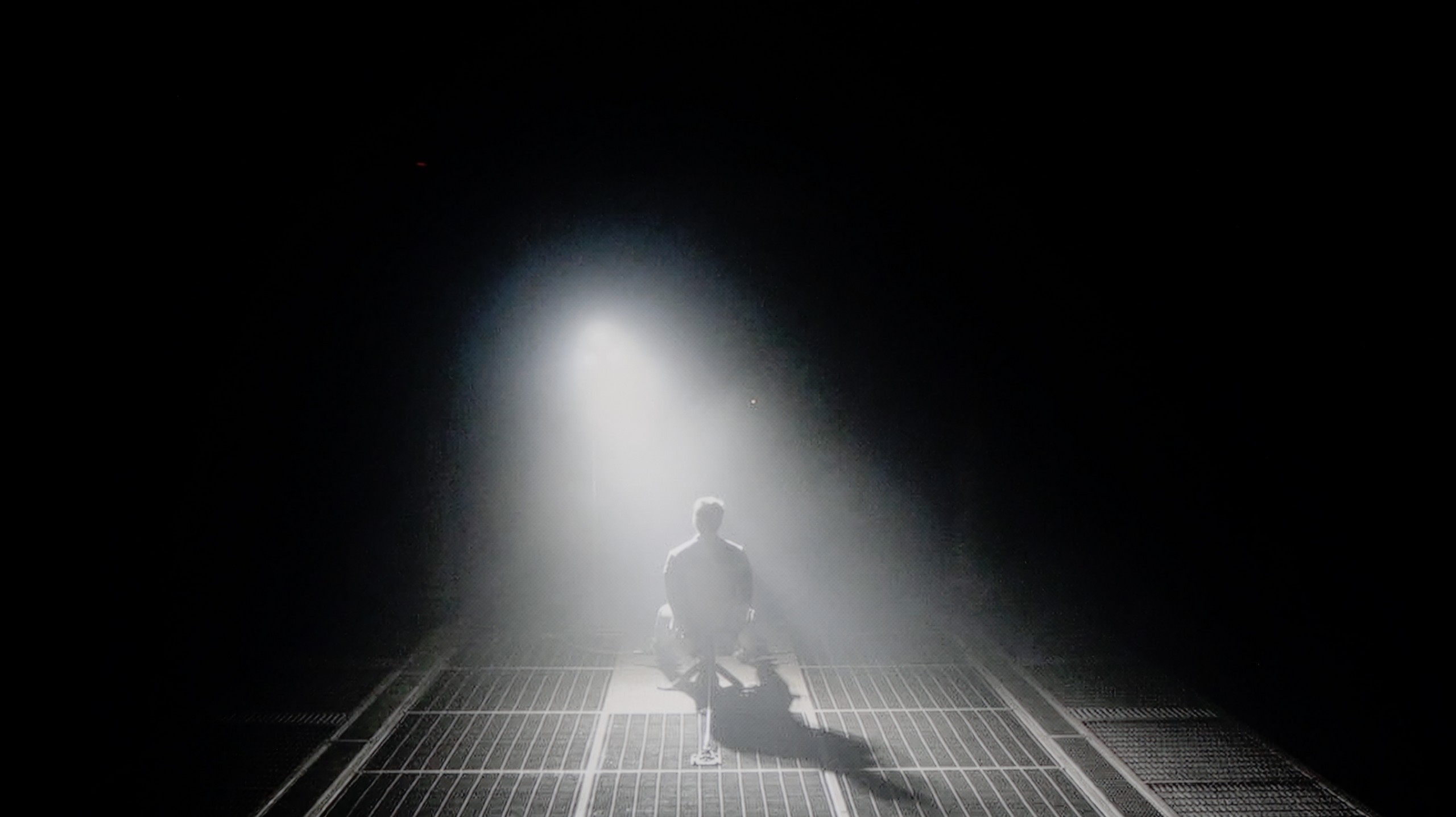
Samsung QN85D for 2024 is the first model from the NeoQLED series to use a VA panel, offering significantly better blacks than IPS/ADS technologies. The 55-inch version has 160 dimming zones, which may not be an impressive number compared to competing models from China. In larger sizes, the number of zones is greater, which naturally translates to better contrast. The contrast results are good, but certain limitations are evident.
With smaller elements on the screen, the limited number of zones causes issues – the TV either tries to maintain a high brightness level, resulting in a halo effect around objects, or it dims too much, as observed in the test scene from the Pioneer disc. Additionally, in the same scene where the TV showcased its highest capabilities (Oblivion) in contrast, it also has significant problems with light separation. You can see how the TV struggles to maintain the best black at the cost of detail in the whites. You can't have it all. Both of these effects impact the perception of contrast, making the performance weaker in more challenging conditions. However, compared to TVs without local dimming technology, the results are very positive and can be surprising.
Similar to the U7Q, the E8Q model uses a VA panel and Mini-LED backlighting. The number of dimming zones also remains at a very similar level – in the 65-inch variant we tested, we counted 220 zones, which is exactly the same as in the U7Q. On paper, it looks really good for this price segment, and even better – in practice. The contrast is high, and the black can be really deep. In many scenes, the lights are clearly separated, and the image gains a sense of space. This is one of those cases where Mini-LED shows it can come close to OLED quality – of course, assuming we understand the limitations we have to consider. In very challenging scenes, there may be slight brightening or a minor halo effect around bright objects, but these are phenomena typical of this technology and are not very noticeable. Ultimately – the contrast and blacks in the E8Q are really solid, nearly identical to the U7Q model. It's hard to nitpick, especially when we look at the price of the television.
HDR effect quality
5.6/10
4.5/10
Luminance measurements in HDR:

Result
999 nit

Result
335 nit

Result
562 nit

Result
182 nit

Result
855 nit

Result
531 nit

Result
148 nit

Result
320 nit

Result
100 nit

Result
625 nit
Scene from the movie “Pan” (about 2800 nits)


Scene from the movie “Billy Lynn” (about 1100 nits)


Static HDR10


Dynamic: HDR10+
Dynamic: Dolby Vision


HDR luminance chart:
Hisense E8Q
Luminancja HDR
Luminance of RGB colors
Samsung Neo QLED QN85D / QNX1D
Luminancja HDR
Luminance of RGB colors
Samsung QN85D leaves us with mixed feelings regarding HDR quality. It can shine in synthetic luminance tests, reaching even 1000 nits – which makes scenes like those from 'The Meg' or the start of 'Life of Pi', where the screen is all bright, look truly impressive. However, in practice, the device has its limitations – especially when smaller bright elements appear on the screen. In such moments, brightness noticeably drops, and the HDR effect loses its punch. At brightness levels around 200-300 nits, the magic of HDR simply fades away, not delivering spectacular effects. However, it’s not that the television completely disappoints – coverage of the DCI-P3 colour gamut at 95% is quite decent, although it doesn’t stand out against the best competitors. Colours are well-rendered, but it's clear that HDR could make a bigger impression if brightness could be better controlled.
Since the E8Q is a twin of the U7Q, it’s no surprise that the HDR effect quality is almost identical. On paper, it looks promising – a peak brightness of 800 nits can impress in many scenes. Moments like light flashes in “The Meg” or shots of the sun in “Life of Pi” can indeed create a “wow” effect. But the longer we watch, the more we notice the limitations. The problem arises when small, bright details need to be shown against a dark background. In such situations, the dimming algorithms try to protect the contrast, but in the process, they also dim what should shine the brightest. Instead of dazzling details, we get almost invisible points of light. This is typical for Mini-LED in this price segment and is not surprising – but it’s worth knowing that the HDR effect will not always be fully preserved. Fortunately, the colour reproduction provides reasons to be pleased. A coverage of the DCI-P3 palette of about 94% is a very good result, and the quantum dot layer used (more precisely, PFS) does its job – colours are saturated and vibrant, especially with 4K content.
Factory color reproduction
6.3/10
6.5/10


Factory Mode
After calibration
Samsung QN85D TV has been tested in the best available mode – Filmmaker. While one might expect its name suggests a mode perfectly suited for films, unfortunately, it has several significant issues.
When it comes to white balance for HD content, there is a noticeable dominance of red and blue, which makes the entire image take on pinkish hues – this is also confirmed by Colour Checker tests. This effect disturbs the naturalness of skin tones and many other elements, which is particularly evident in more demanding scenes. Initially, the white balance for 4K HDR content seems correct, but at the end of the graph, there is a significant spike in blue hues, affecting the final image quality and making the colours appear unnatural.
The gamma brightness characteristic is also not ideal – although it generally stays close to the reference value, there is a slight drop below 2.4, which can impact the perceived depth of shadows. The EOTF curve responsible for 4K content does not perform any better. There is a clear boost compared to the reference curve, leading to excessive brightness in some areas, thus losing the cinematic quality that the Filmmaker mode should provide. While it might initially seem that the effect is cinematic, unfortunately, the number of errors in colour and brightness reproduction is too significant to call it flawless.
Testing the Hisense E8Q in Filmmaker mode, we were hoping for a potentially neutral picture resembling the director's vision. Unfortunately – although it doesn't look too bad on paper (the colour reproduction errors aren't significant), in practice the image feels somewhat unnatural. The reason? The blue colour is boosted too strongly and there is a deficiency of red in the white balance. The effect? Scenes appear cool, and the white seems slightly bluish. Alongside the U7Q model, we also noticed a specific approach to brightness management here. The brightness reproduction curve for HDR content (EOTF) shows that the TV can significantly dim small, bright elements on the screen to maintain contrast – but sometimes it goes too far. On the other hand, it can excessively brighten larger, very bright areas, which disrupts tonal balance. It's a compromise that may not suit everyone – especially if you want a potentially faithful picture straight out of the box.
Color reproduction after calibration
7.9/10
7.4/10



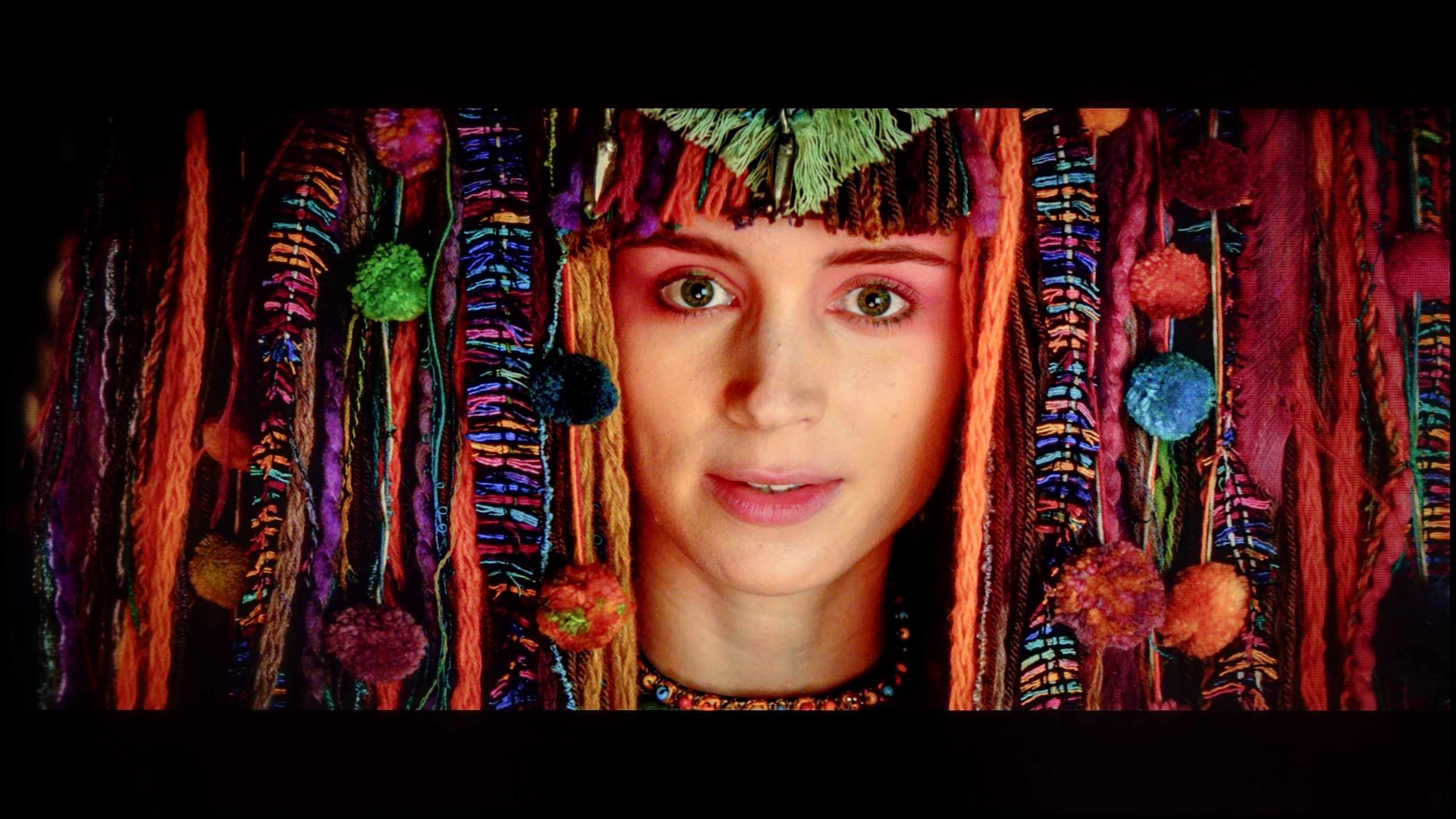
After professional calibration of the Filmmaker mode on the Samsung QN85D television, a significant improvement is noticeable, especially for HD/SDR content. The white balance has been completely free of major errors, and the brightness characteristics for this type of content have been significantly adjusted, allowing for a more natural and realistic image. Television, YouTube films, and other HD materials now look much better, with appropriately balanced colours and without the exaggerated hues that previously marred the experience.
However, the biggest issues arise with 4K HDR content. Despite the calibration, it's hard to speak of significant improvement in white balance here – the differences are cosmetic rather than essential. Brightness, governed by the EOTF curve, seems to be set according to the reference level in synthetic tests at first glance, but has its limitations during actual viewing in films. When analysing the EOTF curve in real film scenes, it becomes clear that the television struggles to maintain consistency in brightness. The effect is that mixed scenes still have their darkest elements boosted, leading to exaggerated contrasts, and completely dark scenes remain too dark, which negatively affects the visibility of details.
Calibration of the Movie mode yielded really good results, especially regarding SDR content. The white balance was successfully adjusted, giving the image a natural look – it appeared almost reference-level. The colours were well-saturated, and the overall experience of the content improved significantly. Unfortunately, when we switched to HDR materials, the familiar issues from the U7Q model returned. The TV still likes to "do its own thing," as seen from the analysis of the EOTF brightness characteristics – despite calibration, the E8Q still darkened small details in the shadows, while brighter parts of the screen were sometimes excessively boosted. In practice, this means that in darker scenes, some of the smallest details could simply disappear. Although it's worth noting that the entire calibration process brought a lot of good, not everything can be bypassed – even with the use of professional tools. The E8Q can impress with its picture, but in HDR content, its construction limitations become apparent, and it's worth keeping this in mind.
Smoothness of tonal transitions
7.6/10
9.9/10





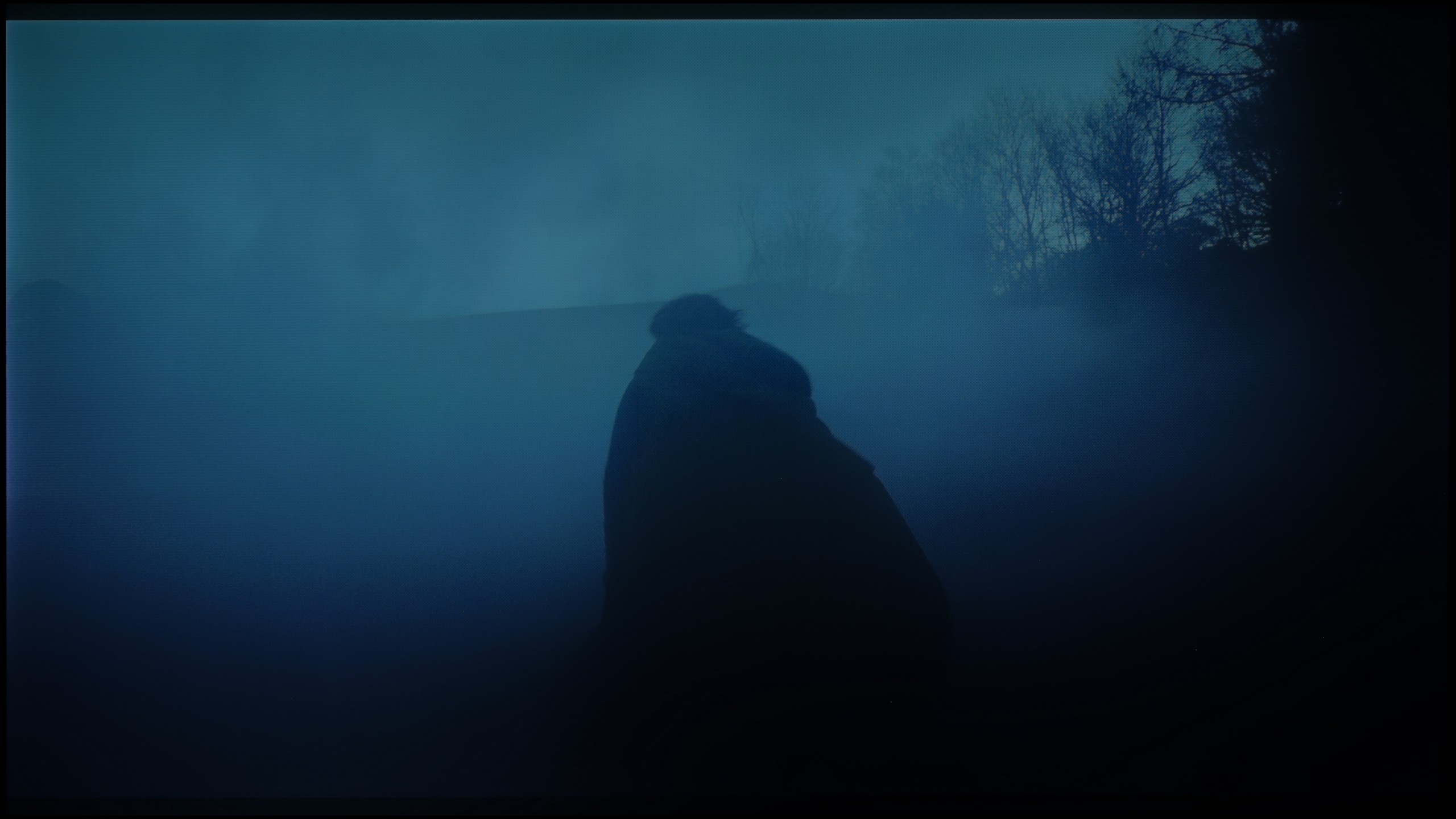






When it comes to tonal transition fluidity on the Samsung QN85D television, it’s generally very good. The tonal transitions are smooth, and there are no significant artifacts. However, more demanding users may notice some issues in certain scenes. For example, when blending darker colours, like in the scene with the red sea, subtle shortcomings can be observed. Similarly, in the case of lighter colours – the scene from the film 'The Martian' shows slight gradation issues, leading to subtle but noticeable transitions between shades. Despite these minor shortcomings, most users should be satisfied. The results are of a high standard and in most cases provide smooth, natural transitions between colours.
In this category, the Hisense E8Q really demonstrates its quality. The transitions between colours are very smooth, without any "steppings" or clear boundaries between tones. The image looks natural, and the colour gradation performs exceptionally well – even in more challenging scenes. If there are any minor imperfections, they are subtle enough not to be noticeable. It's hard to find fault here – it looks almost perfect.
Image scaling and smoothness of tonal transitions
7/10
6/10
Smooth transition function


Image without overscan on the SD signal


When checking the fluidity of tonal transitions in low-resolution materials on the Samsung QN85D television, it’s worth noting the noise reduction feature, which significantly improves problematic tonal transitions. On the other hand, this feature also has its downsides – it removes film grain, which is an important element of many productions, giving them authenticity, and it can also soften the image. This may appeal to those who prefer a smoother picture; however, for lovers of the authentic look of films, using this feature should be considered carefully.
Regarding image scaling, the television performs very well. The model's figure is presented correctly, without noticeable distortions, and the branches in the background do not have excessive artificial sharpness, which is often a problem when scaling lower resolution materials. The high capabilities of the image processor are evident here, which can effectively process lower quality materials, ensuring good final quality.
In the case of older materials of lower quality, gentle smoothing of tonal transitions often comes in handy. The Hisense E8Q, like the U7Q, has a "Smooth and Gradient Picture" feature, but unfortunately, its effectiveness leaves much to be desired. The "Low" setting is nearly invisible in operation, while higher settings blur details instead of improving transitions. The good news is that the feature does not compromise film grain, which means it does not degrade the structure of the image. On the positive side, scaling is commendable. The TV can reasonably convert older content to a higher resolution – without artificially accentuating contours or excessive sharpening. Although it doesn't match the best models in this category, it performs quite well for its class.
Blur and motion smoothness
7.5/10
7.5/10


Blur (native resolution, maximum refresh rate):



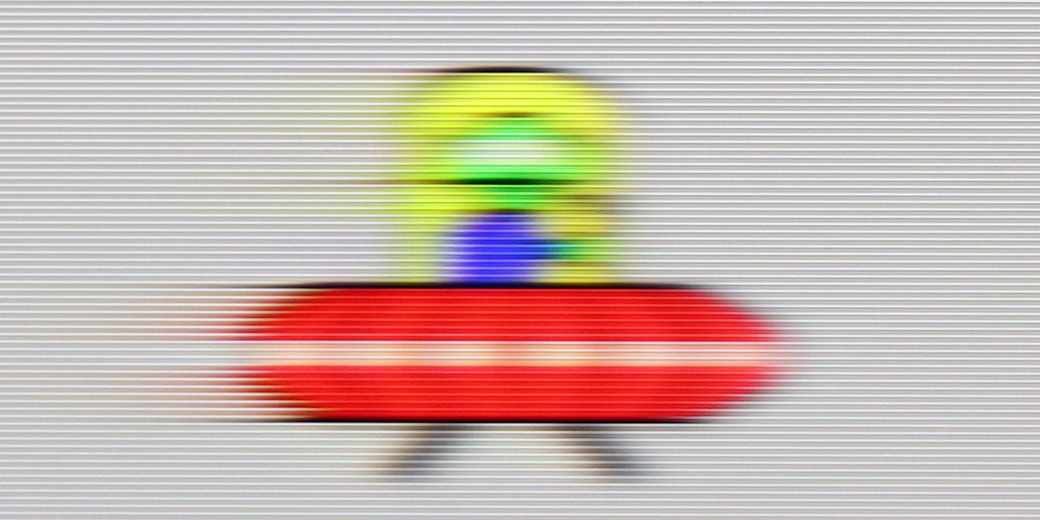
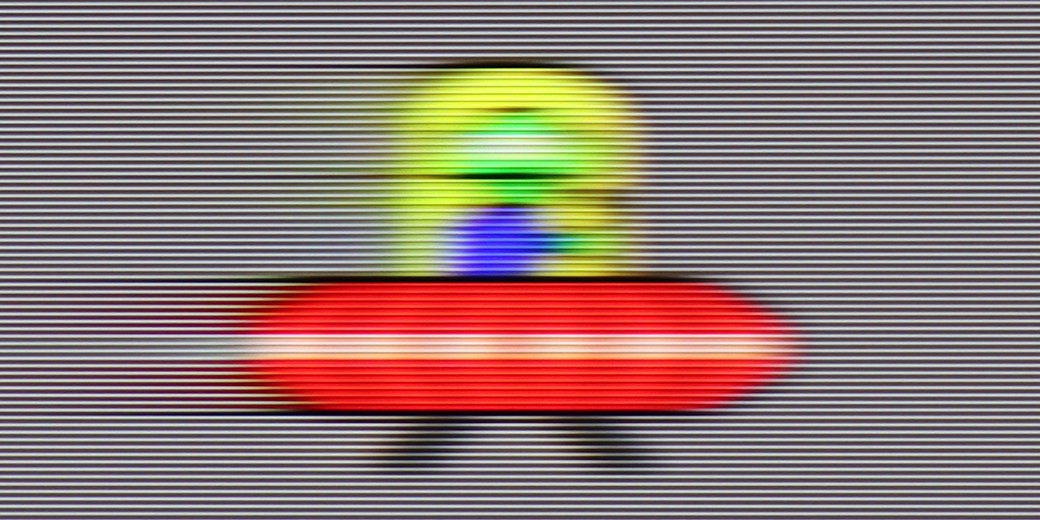
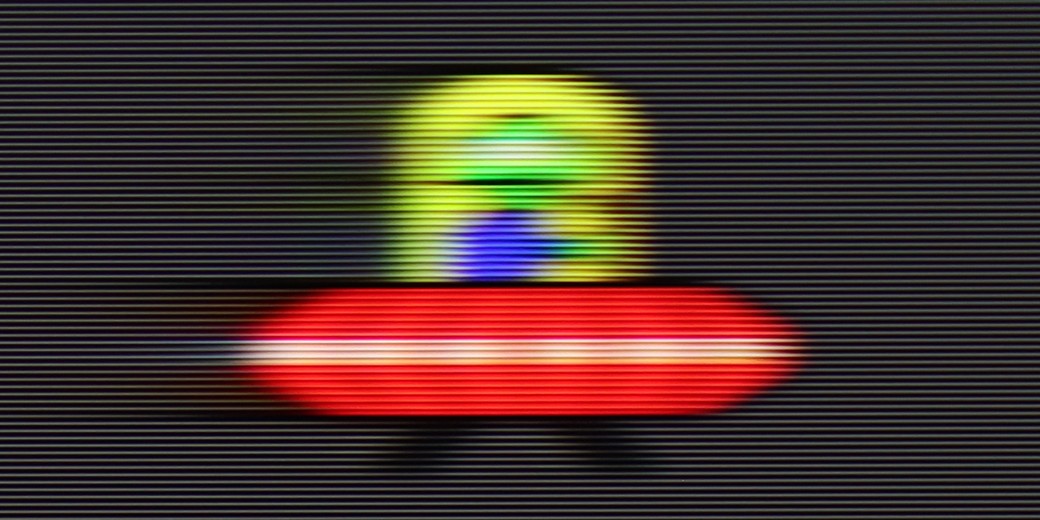
Blur (BFI function enabled):
Image flickers in this mode



Smużenie ():
Smużenie (4K 120Hz):
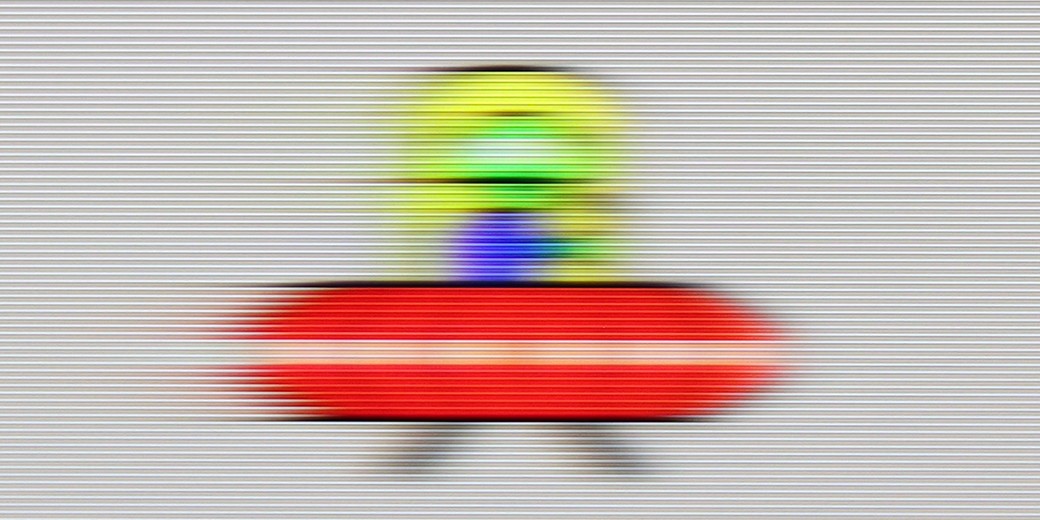
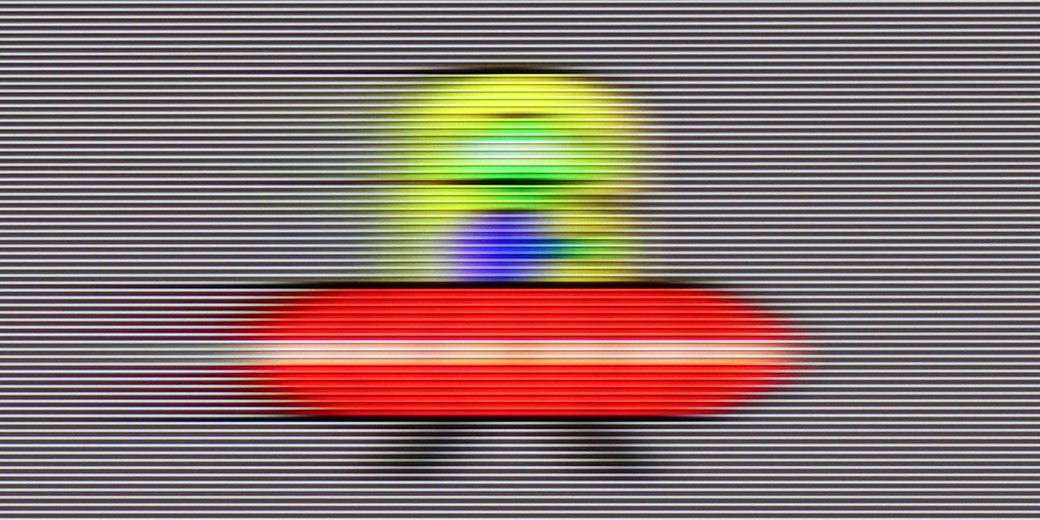
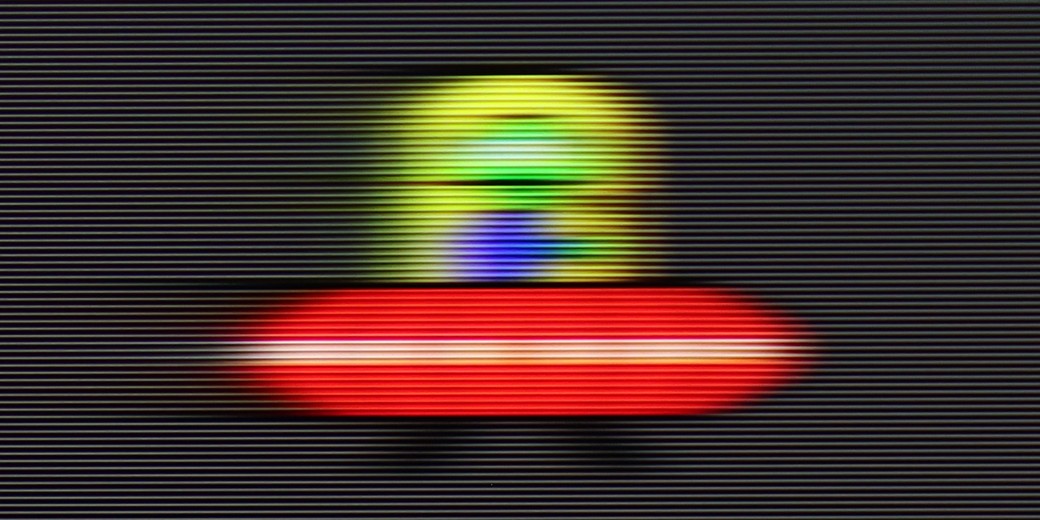
Samsung QN85D TV is equipped with a 120 Hz refresh rate panel, which should satisfy both gamers and sports enthusiasts by offering a smooth and dynamic image. There are options to enhance fluidity, such as the blur and judder reduction feature, which allows precise motion fluidity adjustments on a 10-point scale. The blur reduction increases the sharpness of fast-moving objects, making action scenes more readable, while judder reduction smooths out motion, eliminating the “judder” effect. Ghosting is generally well controlled, though minor imperfections can be visible in more demanding scenes, especially when an object moves against a dark background. Additionally, the TV offers a BFI (Black Frame Insertion) feature at a 60 Hz refresh rate, which can significantly improve motion fluidity experience, although at the cost of image flicker, which might be bothersome for some users.
Similar to the U7Q, the E8Q model is a fast television designed with dynamic content in mind. It supports a 144 Hz refresh rate at 4K resolution, and if for some reason someone is still gaming in Full HD – it can even reach 240 Hz. This is a significant advantage, especially for PC users looking for maximum smoothness. In everyday use, the television performs very well. The “Ultra Motion Smoothness” mode gives us two sliders, allowing you to set the picture to your preference – whether it's more cinematic with the film frame preserved or highly smoothed, almost “TV show-like.” It's good that the manufacturer provides a choice here, instead of imposing one style. On sports material, live broadcasts, or in games – motion looks clean and stable. Sure, it’s not at the OLED level, but for this price range, the E8Q does a really good job.
Console compatibility and gaming features
9.5/10
8.5/10
- ALLM
- VRR
- VRR range48 - 120Hz48 - 240Hz
- Dolby Vision Game Mode
- Correct implementation of HGIG
- 1080p@120Hz
- 1440p@120Hz
- 4K@120Hz
- Game bar



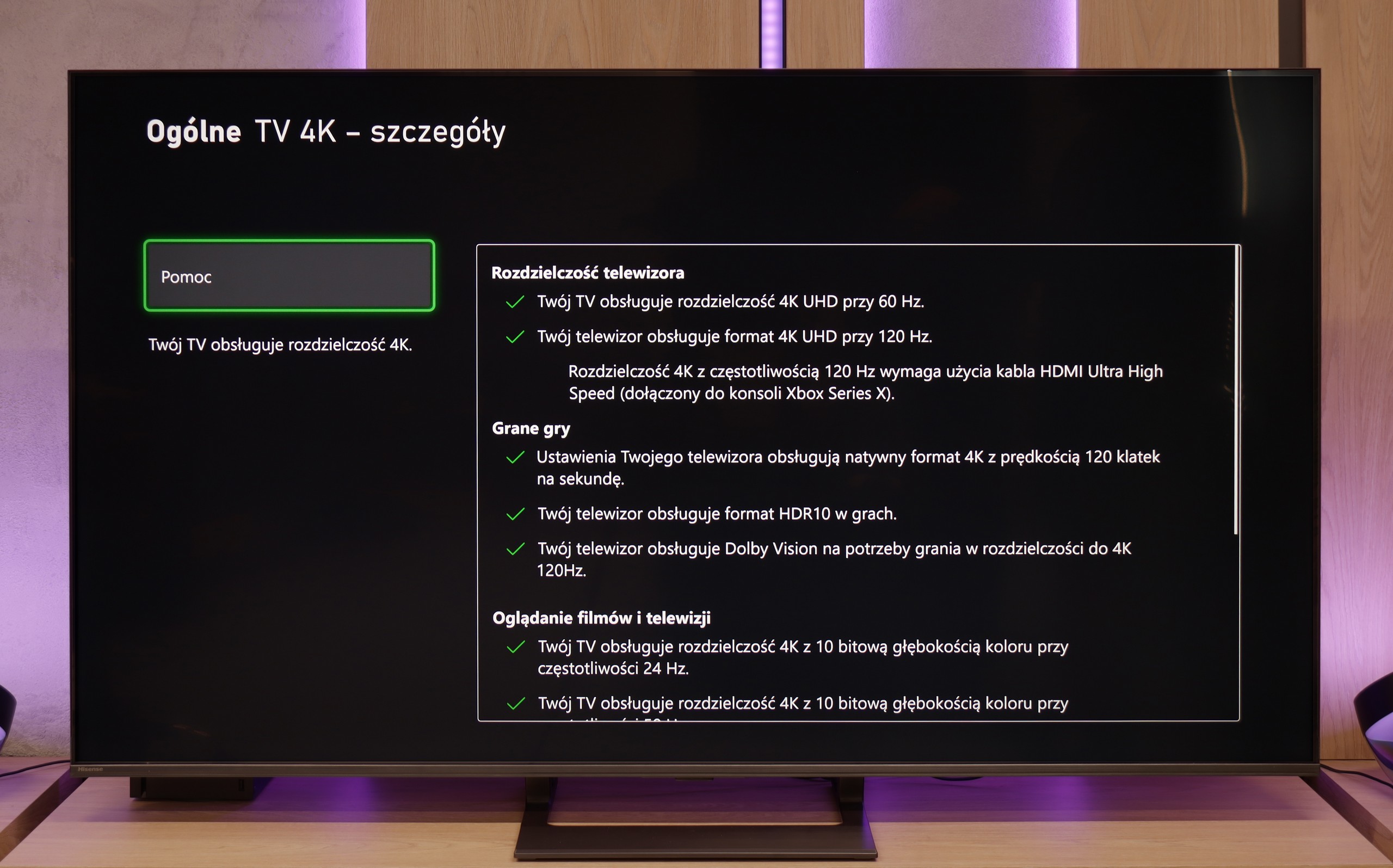

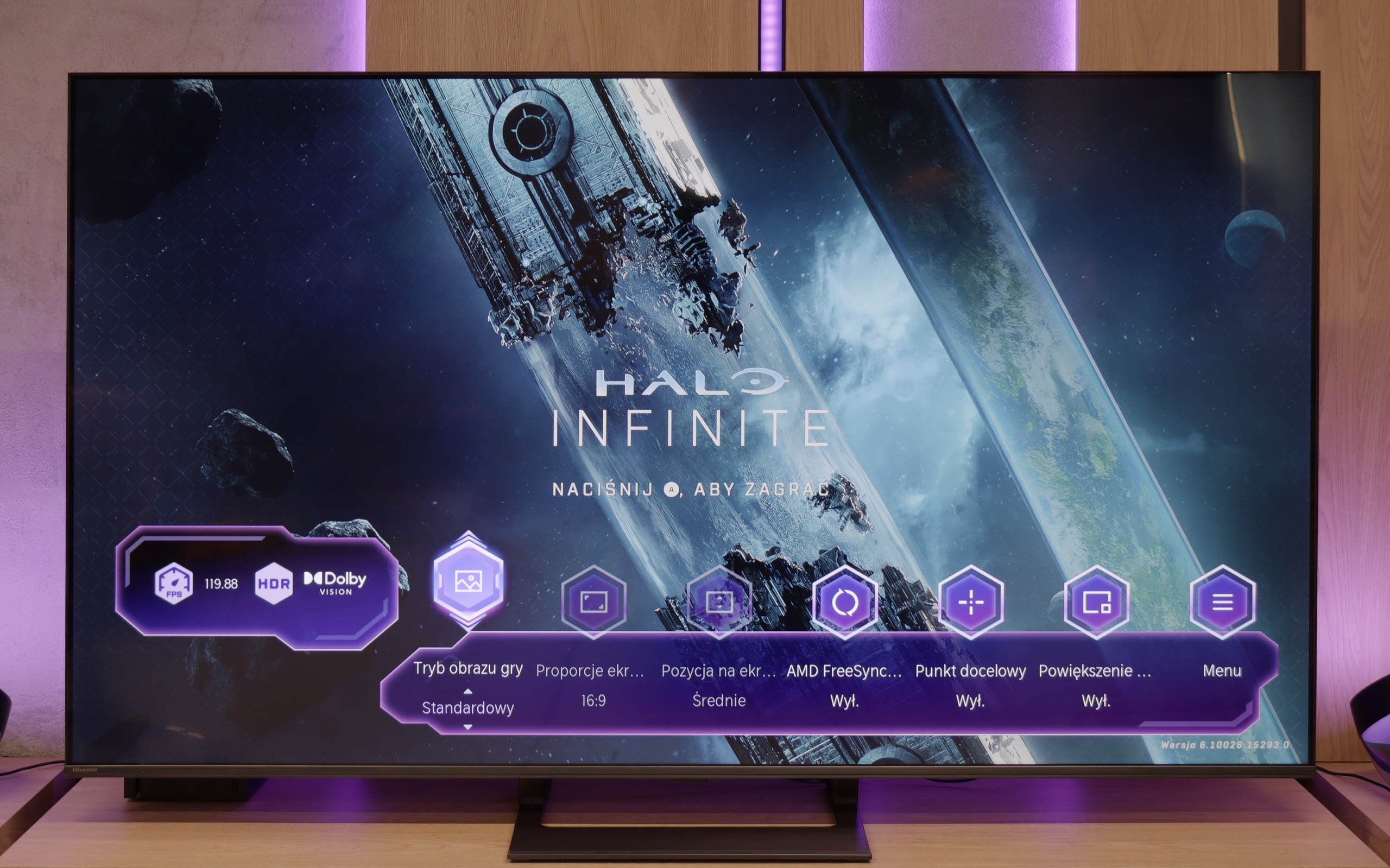


The Samsung QN85D television is an excellent choice for gamers, offering a wide range of features that enhance the gaming experience and make it even more exciting. With a 120 Hz refresh rate panel, the image is incredibly smooth, which is crucial during dynamic scenes in action games. The television also boasts low input lag, allowing for nearly instant reactions to player commands, which translates into better control over characters and events on the screen.
In addition, the QN85D Samsung supports VRR (Variable Refresh Rate) and ALLM (Auto Low Latency Mode) technologies, which optimise image smoothness and reduce delays by automatically adjusting the television to the needs of gamers. Moreover, the Xbox app allows for cloud gaming without the need for a console, which is a big plus for those who want to enjoy their favourite titles without additional hardware – a feature that sets Samsung televisions apart.
The Auto Motion Plus Game feature is another aspect worth highlighting. This motion smoothing technology creates the illusion of more frames per second – as a result, games at 30 fps appear smoother, resembling gameplay at 45 fps, while games at 60 Hz come closer to 90 Hz. Most importantly, this feature does not introduce significant lag, ensuring that gaming comfort is not compromised. This allows gamers to enjoy a smoother image without compromising responsiveness.
Hisense E8Q does not hide its gaming pedigree. Just the specifications reveal that we are dealing with a television that will perform excellently as a gaming screen. Variable Refresh Rate (VRR)? It's there. Automatic Game Mode switching (ALLM)? That's there too. Additionally, there's impressive refreshment – 120 Hz in 4K or even 240 Hz in Full HD. Such a set is rare in this price segment. Everything runs smoothly and without major surprises. The only missing element – similar to the U7Q – remains support for HGiG. It's a shame because this feature facilitates adjusting the brightness curve to the capabilities of the specific television, enhancing visual fidelity with the intentions of HDR game developers. Without it, manual tweaking of the settings is necessary, which does not always yield a satisfying result.
Input lag
9.9/10
9.7/10
SDR
HDR
Dolby Vision
Samsung QN85D impresses when it comes to input lag value. The television achieves outstanding results – below 15 ms for 60 Hz content and around 10 ms for 120 Hz content. This allows gamers to enjoy instantaneous responses to their actions, especially in dynamic games where every millisecond counts. Such low input lag makes gameplay more responsive and natural, enhancing the overall experience while playing.
The E8Q handles delays very well. For 120 Hz content, the input lag is super low – practically imperceptible even for more demanding players. At 60 Hz, the values are slightly higher, but still comfortably within the "placebo" range – there's nothing to complain about. The biggest increase in latency was noted in Dolby Vision Gaming mode. The TV needs more time to process the signal then, but even in this scenario, it doesn't exceed 30 ms. These may not be ideal values, but for most players – especially console gamers – it won't be a problem.
Compatibility with PC
7.6/10
8.6/10


Samsung QN85D could be a good option as a computer monitor. Thanks to support for chroma 4:4:4 (available only in "Game" mode), text on the screen is clear and easy to read, which is crucial for those working with word documents or spreadsheets. A major advantage of this model is its exceptionally low input lag in "PC" mode – just 9 ms, which is really impressive and provides high fluidity and responsiveness, making it suitable for both work and gaming. However, there are some drawbacks. When displaying fonts on a dark background, an issue arises – when zooming in on an image, it can be seen that the horizontal lines are darker than the vertical ones. This is due to the fact that the sub-pixels in those areas do not light up fully, which may be a result of oversight on the manufacturer's part in optimising the algorithm responsible for displaying thin lines. As a result, the quality of text on a dark background is not ideal. Despite this, the television still remains a very good choice as a PC monitor, especially considering the low input lag and support for chroma 4:4:4.
In terms of collaboration with the computer, the E8Q performs really well. It supports chroma 4:4:4 at full 4K resolution and the highest refresh rates, so the readability of fonts – even the smallest ones – is at a very good level. There are slight blurriness issues with exceptionally thin fonts, but in everyday use, it's hard to consider this a serious problem. A nice addition for PC gamers is the ability to achieve up to 288 Hz at lower resolutions. The E8Q communicates effortlessly with powerful graphics cards, making it an interesting choice not only for movies or consoles but also for gaming on the computer.
Viewing angles
2.9/10
3/10
The Samsung QN85D television, due to its VA panel, has quite poor viewing angles. When viewed from the side, colours lose their intensity, and the image becomes noticeably less contrasted. This is a typical drawback of VA panels, which offer significantly worse picture quality when viewed from wider angles. However, directly in front of the television, the situation looks much better – the VA panel then provides deep blacks and better contrast, which is a big plus if the television is mainly watched while sitting directly in front of the screen.
E8Q, like most TVs with a VA panel, looks best when we're sitting directly in front of the screen. In this position, you can expect deep blacks, good colour saturation, and high contrast. Unfortunately, just shifting a little to the side causes the picture quality to drop – colours start to fade, and blacks become more grey than black. It's not surprising, but it's worth keeping in mind, especially if we plan to watch with a larger group from different spots in the lounge. On the bright side – in return, we get significantly better black levels than in IPS panels.
TV efficiency during daytime
7.3/10
6.2/10



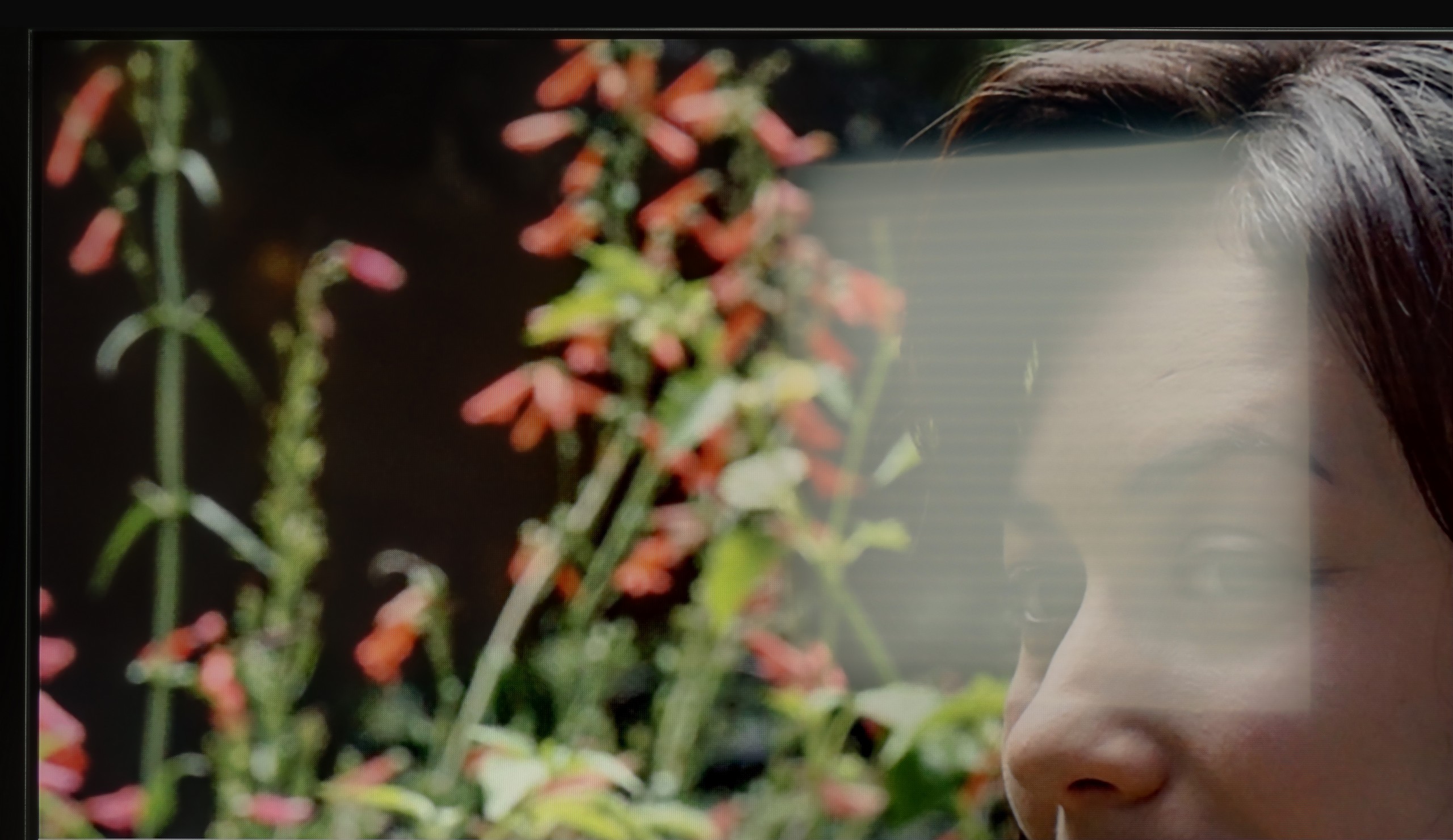
Matrix brightness
Average luminance SDR
Hisense E8Q: 504 cd/m2
Samsung Neo QLED QN85D / QNX1D: 825 cd/m2
Samsung QN85D TV performs very well in bright daylight conditions. Although the satin panel moderately suppresses reflections, the brightness level of 825 cd/m² is truly impressive. Even in direct sunlight, the television handles itself very well, providing a clear and sharp image, and the largest external light sources do not pose a significant problem. This makes this model a good option for rooms with a lot of natural light.
Hisense E8Q isn't afraid of bright interiors. Even when the sun is shining outside, the television can maintain good image readability. With a brightness level of around 500 nits, you can comfortably watch content during the day without feeling like everything is drowning in glare. The satin screen coating also helps to nicely minimise reflections – it doesn't completely eliminate them, but reduces them enough that they don't interfere with everyday viewing.
Details about the matrix
Subpixel Structure:

Panel uniformity:

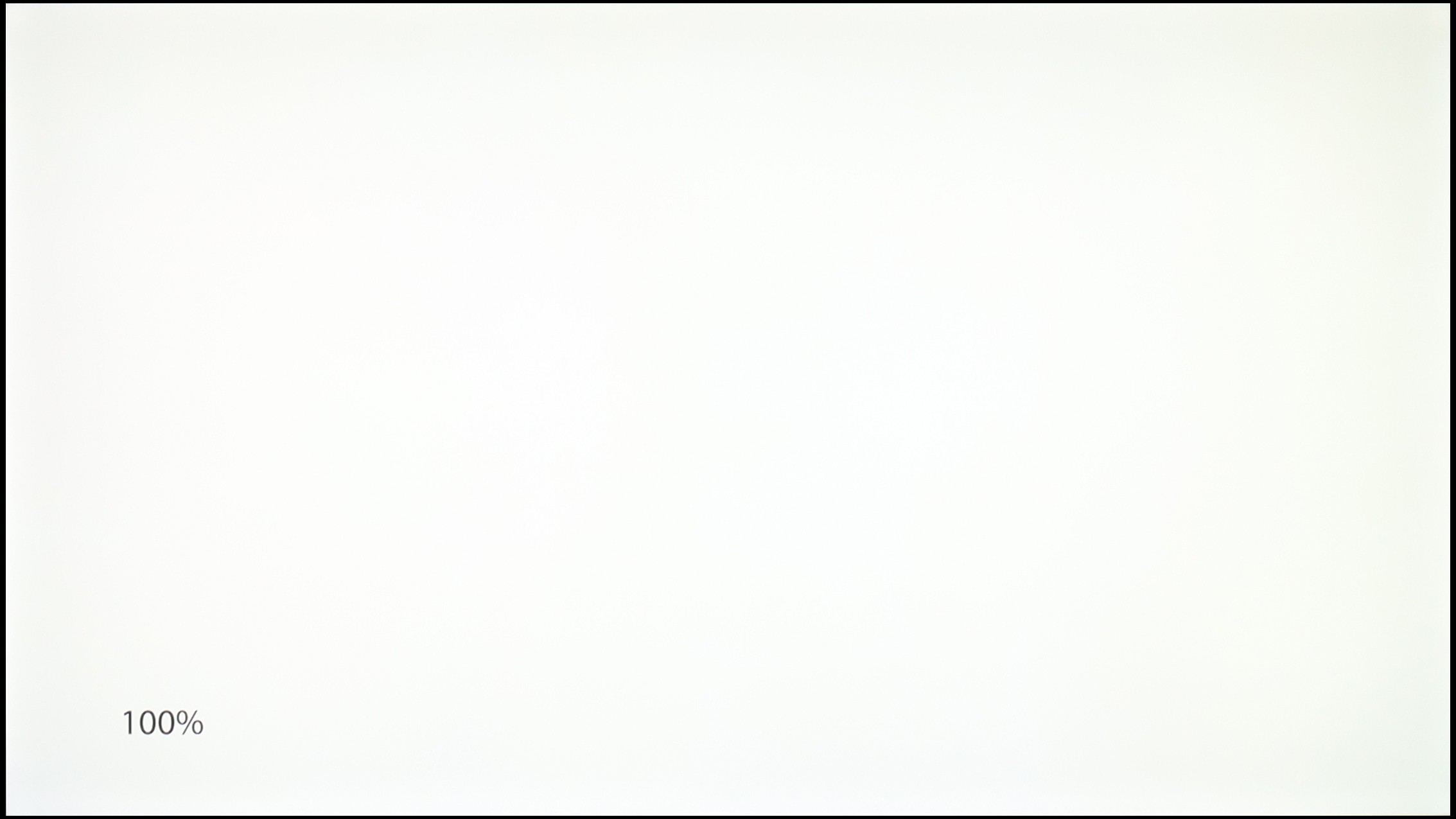
Samsung Neo QLED QN85D / QNX1D
Hisense E8Q
TV features
7.7/10
8.9/10
- HDMI inputs0 x HDMI 2.0, 4 x HDMI 2.1 48Gbps2 x HDMI 2.0, 2 x HDMI 2.1 48Gbps
- Other inputsRCA (Chinch)
- OutputsToslink (Optical audio), eARC (HDMI), ARC (HDMI)Toslink (Optical audio), eARC (HDMI), ARC (HDMI), Mini-Jack (Headphones)
- Network InterfacesWi-Fi 2.4GHz, Wi-Fi 5GHz, Ethernet (LAN) 100MbpsWi-Fi 2.4GHz, Wi-Fi 5GHz, Ethernet (LAN) 100Mbps
- TV receptionDVB-T, DVB-T2, DVB-S, DVB-S2, DVB-CDVB-T, DVB-T2, DVB-S, DVB-S2, DVB-C
Classic features:
- Recording to USB (terrestrial TV)
- Recording programming
- Picture in Picture (PiP)
- RF remote control (no need to aim at the screen)
- Backlit remote control
- Teletext
- Audio only mode
- Possibility to connect Bluetooth headphones to the TV
- Possibility to simultaneously use Bluetooth headphones and the TV speaker
Smart features:
- AirPlay
- Screen mirroring (Windows Miracast)
- Wyszukiwanie głosowe
- Voice search in native language
- Ability to connect a keyboard and mouse


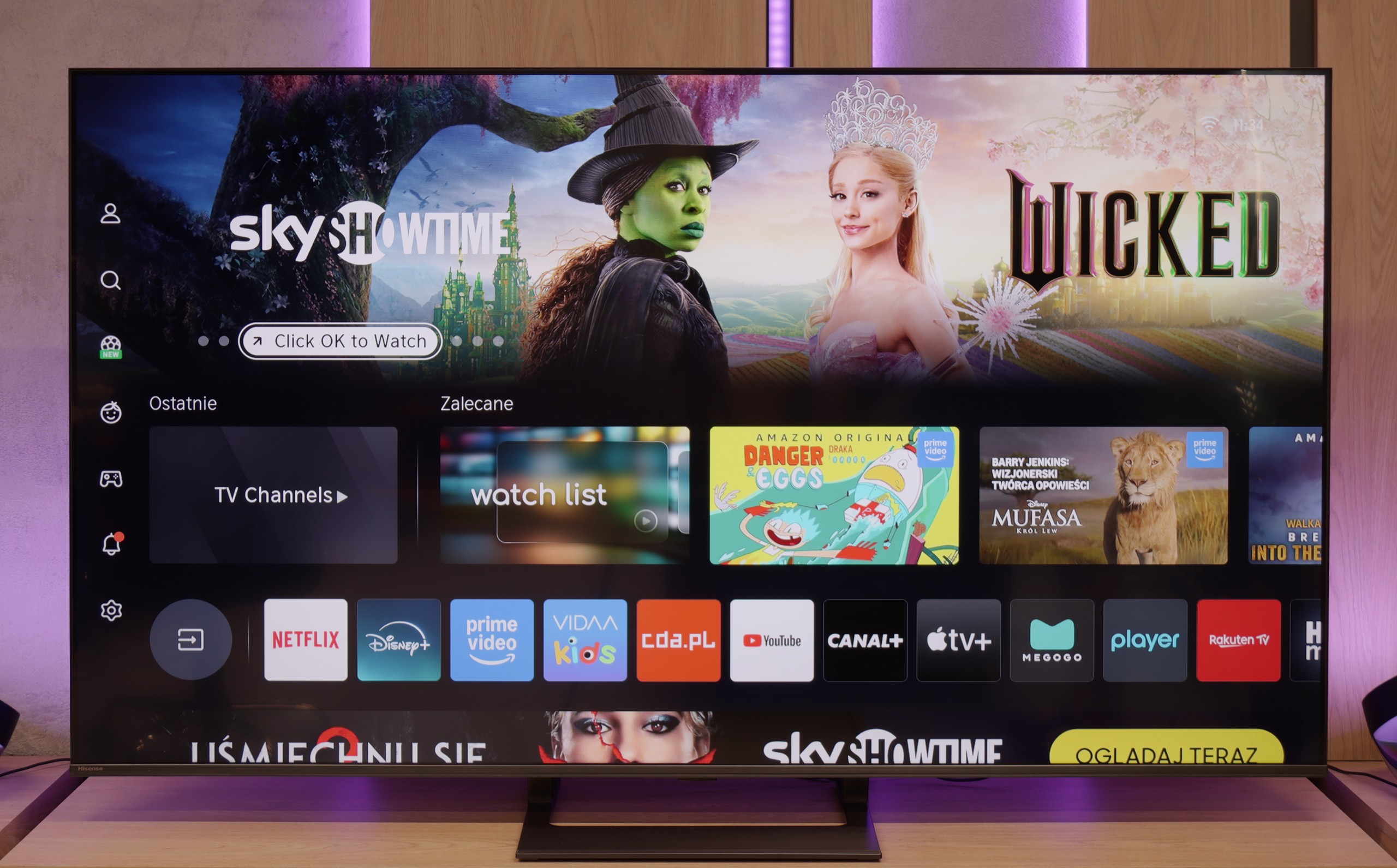
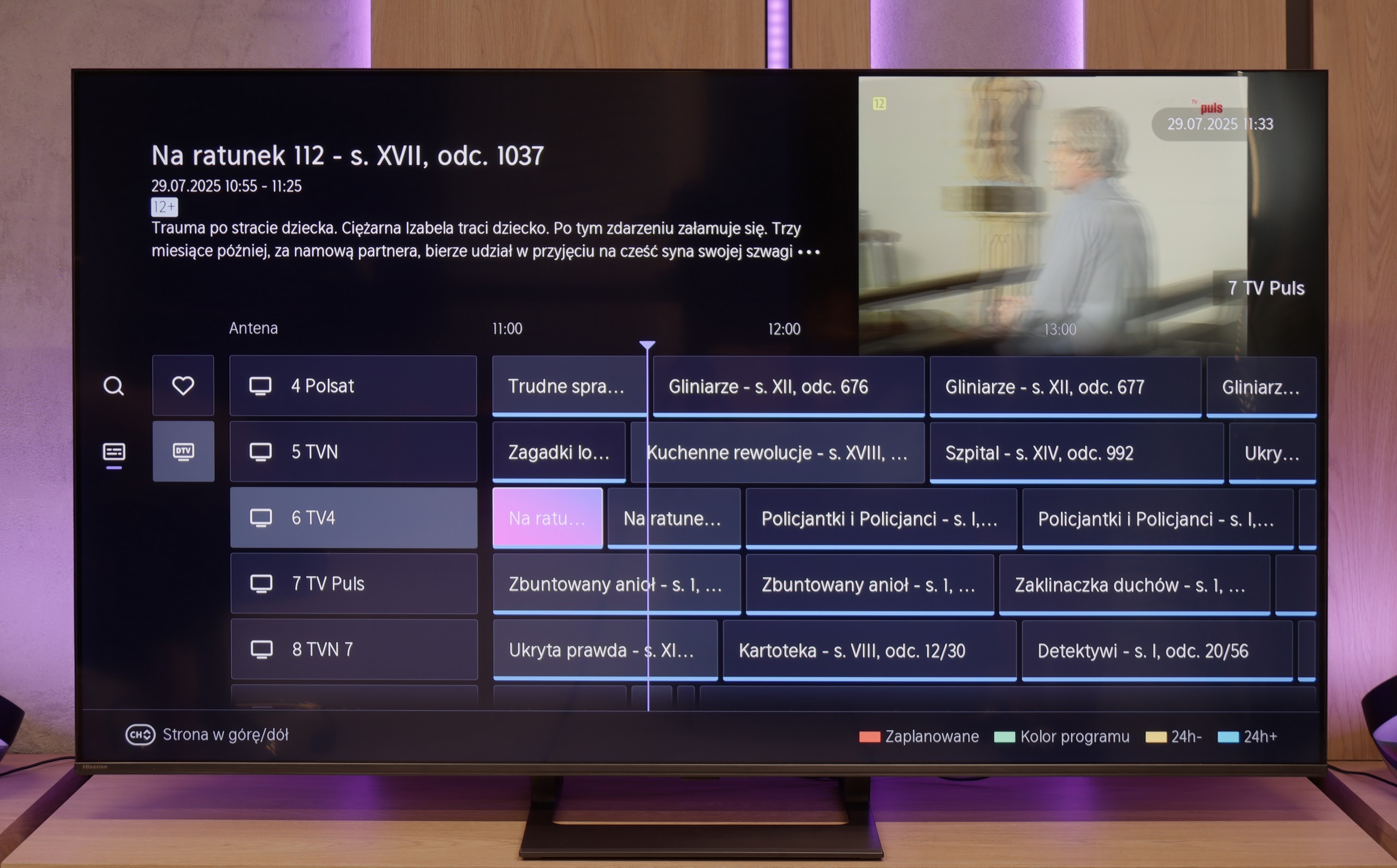


Samsung QN85D offers a wide range of smart features, thanks to the Tizen platform. Users have access to applications and features such as SmartThings, allowing management not only of Samsung devices but also equipment from other brands, creating a complete smart home ecosystem. The TV also supports AirPlay, enabling convenient content streaming from Apple devices directly to the screen, enhancing flexibility and comfort in everyday use.
Model QN85D also stands out in terms of unique features. The TV features Daily+, offering a variety of daily content such as fitness exercises or workspace. Additionally, the attractive appearance of the TV, while not as slim as last year's models, still presents well. The central stand provides solid support and adds character to the device, giving the TV a more elegant look.
In terms of user features, the TV is equipped with a remote that controls set-top boxes, such as Canal+, allowing easy control of most home equipment with a single device. The TV also has a PiP (Picture-in-Picture) function, enabling simultaneous viewing of two image sources. Unfortunately, one of the drawbacks that can be noticed is the lack of a recording function, which may be a significant downside for some users.
Classic Features – E8Q
The Hisense E8Q is not just equipment for gamers or movie enthusiasts – it can also serve as an everyday TV for the whole family. We can record programs to USB, connect headphones or speakers via Bluetooth, and the entire interface – including the channel guide – is clear and easy to use. It only lacks a PiP function, but besides that, the set of classic features is really complete.
Smart TV – VIDAA System
The E8Q runs on the VIDAA system, which is becoming more refined every year. Voice search in Polish works flawlessly, and it's easy to stream content from a phone (AirPlay and screen mirroring). The system itself operates smoothly, without hiccups, although – as is often the case with closed platforms – there may be one or two less popular apps missing. It’s worth checking before purchase whether it has everything we use daily.
Playing files from USB
8.9/10
8.2/10
Supported photo formats:
Maximum photo resolution:

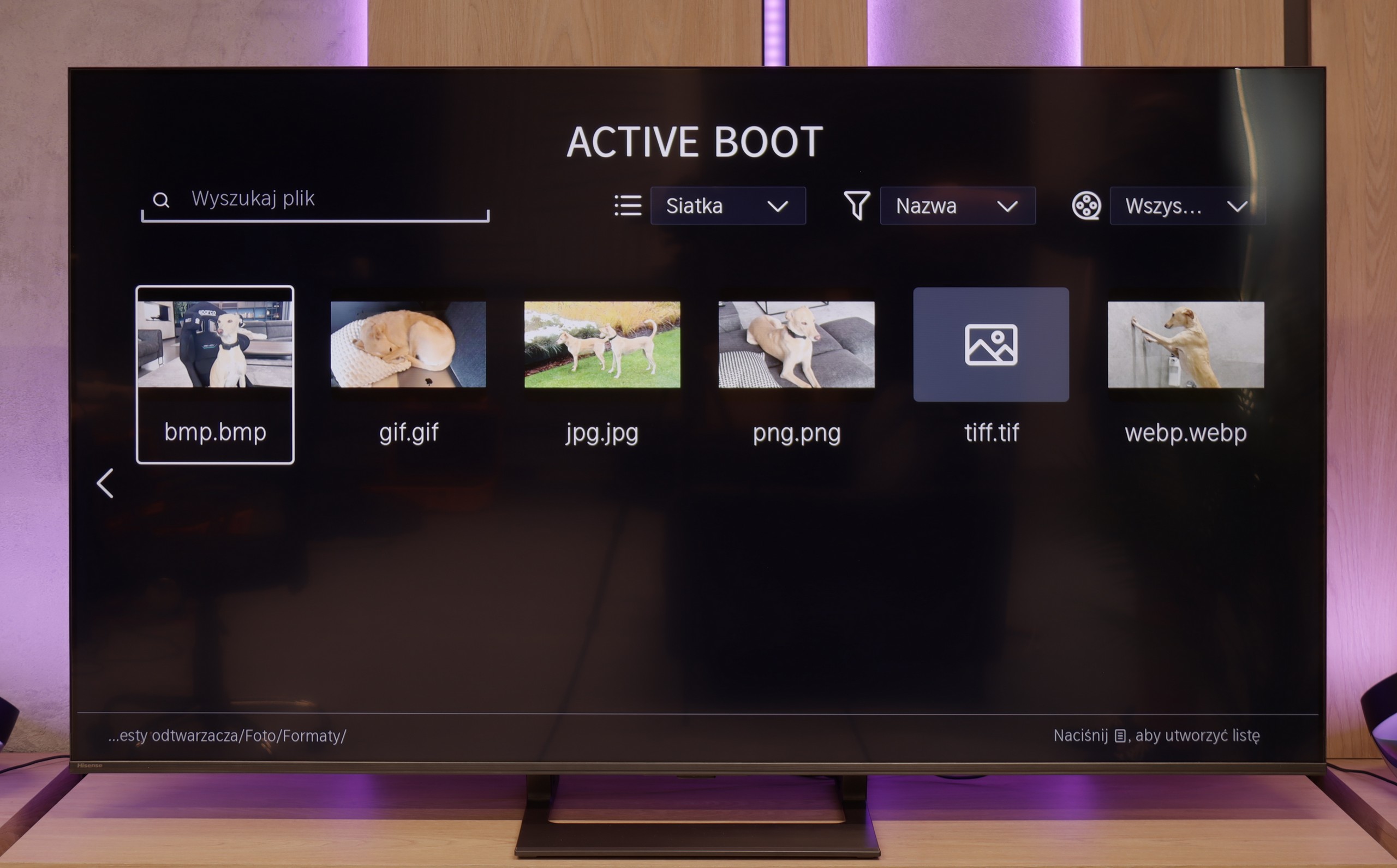
The built-in player in the Samsung QN85D should satisfy most users. It handles popular video and audio formats without much trouble, offering solid support for the most commonly used codecs. However, more demanding users may notice some shortcomings – it is not possible to play photos in the HEIC format, popular in Apple devices, as well as a few other, less common photo formats.
The built-in media player in the E8Q performs quite well. It supports most popular video and audio formats, and files from USB drives or external disks play without major issues. Polish characters? They're supported. Subtitles? They work. The only minor drawback is the occasional problem with displaying high-resolution images – especially those from cameras or smartphones. So if you're planning to show holiday photos on the big screen, it’s worth checking beforehand that they all load correctly from the memory of the disk or USB drive.
Apps
8.7/10
7.7/10














































Sound
7/10
5.5/10
- Subjective sound quality:7/105.5/10
- Dolby Digital Plus 7.1:
- Dolby True HD 7.1:
- Dolby Atmos in Dolby Digital Plus (JOC):
- Dolby Atmos in Dolby True HD:
- DTS:X in DTS-HD MA:
- DTS-HD Master Audio:
The sound on the Samsung QN85D television is pleasant, with a subtle sense of bass and clarity across the entire volume range. This is thanks to the built-in 2.2 40W speakers. Unfortunately, the lack of support for the DTS audio format may be problematic for users wanting to enjoy a full sound experience. In such cases, it will be necessary to use an external player to get support for this format.
Here unfortunately, the Hisense E8Q didn’t make the best impression on us. Although on paper it has speakers with a power of 40 W (which is just a bit less than 50 W in the U7Q), in practice the difference is significant – and unfortunately not in favour of the E8Q. During testing, it quickly became clear that something wasn’t right. When the volume was turned up above 40–50%, the entire back casing began to resonate, and unpleasant crackling sounds emitted from the TV. Even during regular viewing, it was hard not to notice this, and definitely hard not to hear. In this form, it’s difficult to talk about listening comfort. We don’t rule out that it was a problem with a specific test unit, but still – it’s worth keeping this in mind. If you care about good sound, consider connecting a soundbar or… go for the U7Q, which definitely performs better.


